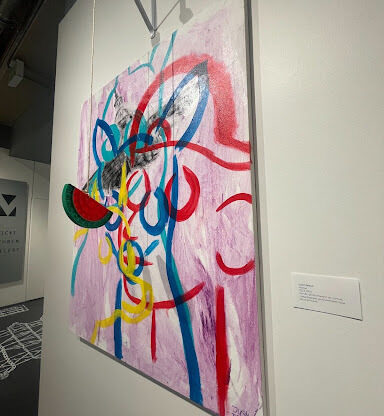What is so terrifying about the unknown? Shudder has a new answer to that question with their brand new film, “Skinamarink,” one of the horror-based streaming service’s newest horror which dropped on Jan. 13.
“Skinamarink” is an independent experimental horror film distributed by IFC Films and is the feature-length directorial debut of Kyle Edward Ball., who wrote the movie as well. He is the creator behind YouTube content on the channel Bitsized Nightmares.
Bitsized Nightmares is a YouTube channel filled with short films and audio content. This channel falls into a category of YouTube content creation called analog horror. Analog horror is a genre of web content as a whole surrounding found footage-style videos and fictionalized news articles from the late 20th and early 21st century.
Recently this genre has found a home on Youtube with creations from Kyle Edward Ball and other creators. Some of these include Alex Kister, creator of Mandela Catalogue, and Kane Pixels, creator of the viral Backrooms Youtube series (which is being turned into a film distributed by A24).
“Skinamarink” is a mainstream full-length version of the essence analog horror YouTube content Kyle Edward Ball has captured since 2017. It’s the first big intersection between web horror and feature-length horror filmmaking. “Skinamarink” is more focused on the feelings of the viewer and the interpretations audiences come up with instead of telling a straightforward and specific story.
There is a lack of a solidified plot during the runtime of “Skinamarink.” While this has been a divisive factor of the movie for audiences and critics, it fits well for the film. It is able to be a more expansive and theorizing experience overall. The movie follows two young children who are woken up in the middle of the night to find their father is missing and all of the windows and doors to their house have seemingly vanished. Besides that, the movie takes a more observational route in showing how the boys are existing within this universe that unfolds in the movie and at times can feel frustrating, but overall creates a really immersive film experience.
This movie taps into the real and common fears of children including waking up in the middle of the night, not being able to find your parents and the spine-chilling feeling that someone is watching you in the shadows. It creates a sense of disorientation for the viewer that’s the same as the children while they try to navigate their familiar, yet ominous house.
Being trapped in a house can be horrifying, especially when there are no doors, windows, or toilets. The viewer is forced to watch these two children encounter their house figuratively and literally flipping upside down. This setting is unnerving and familiar, creating an ambiance the viewer understands and fears. It forces the viewer to squint their eyes as they try to make out what lurks in the darkness of the house. This aspect of the film does a great job of separating it from a typical convention of horror films, an overreliance on jumpscares and visuals.
“Skinamarink” doesn’t need to rely on the overabundance of jumpscares because the ambiance and suspense are what drive the horrors these children are faced with. The jumpscares that do appear in the film are more audio cues than physical jumpscares.
“Skinamarink” doesn’t move at the quick pace horror fans are used to. The one-hundred-minute run time feels stretched out due to the lack of consistent dialogue and the panning camera movements. The film is a modern take on slow cinema, a minimalist style of filmmaking that is based on observation and there is a lack of formal narrative.
The entire film has a dream-like, more so nightmare-like, quality to it with the use of long static shots, distortion of the setting through panning shots and grainy footage cut off at confusing angles. It is reflective of the content it takes inspiration from on Youtube and is a very disorienting experience on the big screen. It wasn’t unenjoyable by any means but can throw the viewer for a loop if they are expecting the one-hundred-minute run time to speed by.
Most objects and people are somewhat obscured through this style of camera work and it creates more tension and suspense in the world of the film and in the viewer’s mind. Because of this intentional camera work and the overall tone of the film, the viewers never get a good shot of any character’s faces.
“Skinamarink” is a highly interpretive experimental horror that’ll give the viewer a chance to ruminate over their own childhood nightmares and irrational fears.
Overall rating: 3/5











